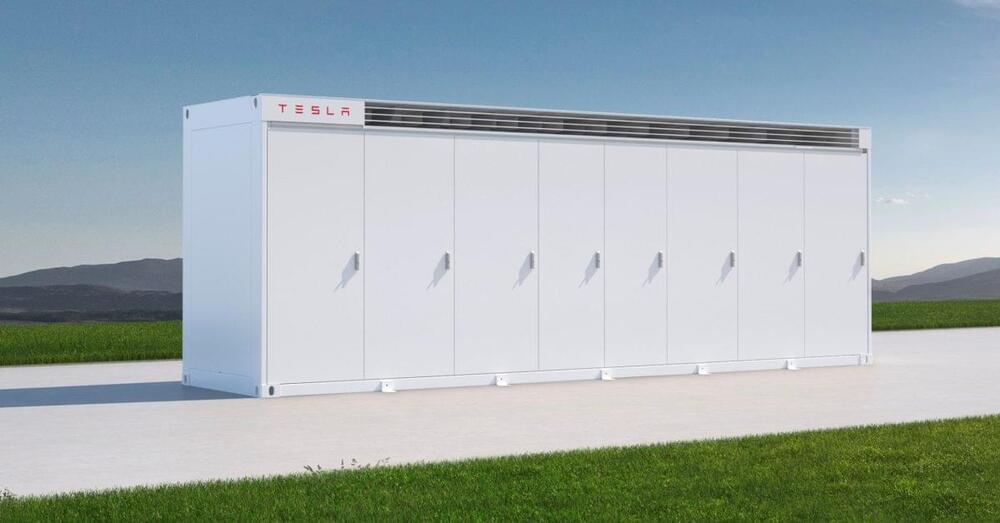Archive for the ‘sustainability’ category: Page 33
May 1, 2024
Marriage of synthetic biology and 3D printing produces programmable living materials
Posted by Dan Breeden in categories: 3D printing, bioengineering, biological, genetics, sustainability
Scientists are harnessing cells to make new types of materials that can grow, repair themselves and even respond to their environment. These solid “engineered living materials” are made by embedding cells in an inanimate matrix that’s formed in a desired shape. Now, researchers report in ACS Central Science that they have 3D printed a bioink containing plant cells that were then genetically modified, producing programmable materials. Applications could someday include biomanufacturing and sustainable construction.
May 1, 2024
China battery price war could soon make electric cars cheaper. Here’s how
Posted by Shailesh Prasad in categories: energy, sustainability, transportation
The main cost of an electric vehicle (EV) is its battery. The high cost of energy-dense batteries has meant EVs have long been more expensive than their fossil fuel equivalents.
But this could change faster than we thought. The world’s largest maker of batteries for electric cars, China’s CATL, claims it will slash the cost of its batteries by up to 50% this year, as a price war kicks off with the second largest maker in China, BYD subsidiary FinDreams.
What’s behind this? After the electric vehicle industry experienced a huge surge in 2022, it has hit headwinds. It ramped up faster than demand, triggering efforts to cut costs.
May 1, 2024
Scientists Say New Material Can Suck Carbon Out of Atmosphere Faster Than Trees
Posted by Shailesh Prasad in categories: climatology, computing, sustainability
A team of scientists in the United Kingdom say they’ve discovered a porous material that has the potential to store large quantities of greenhouse gases, making it a possible new tool in the arsenal to fight climate change.
The scientists detailed how they used computational models to develop this material in a newly published paper in the journal Nature Synthesis, arguing that certain features of the structure could make it excellent storage for carbon dioxide and sulphur hexafluoride, another powerful greenhouse gas.
“This is an exciting discovery because we need new porous materials to help solve society’s biggest challenges,” engineering professor Marc Little from Edinburgh’s Heriot-Watt University said in a statement about the research.
May 1, 2024
Tesla Megapack to power new massive record-breaking 1.3 GWh battery system
Posted by Shailesh Prasad in category: sustainability
Tesla Megapack has been selected to power a massive new record-breaking 13 GWh battery system from Neoen in Australia.
This project is the second stage of the Collie Battery project, which is named after a town in Western Australia where the project is located.
As we previously reported, France’s Neoen is already building the first stage with Tesla Megapack 2XLs.
Apr 30, 2024
Discovery of uranium-contaminated soil purification material without secondary environmental pollution
Posted by Dan Breeden in categories: chemistry, economics, engineering, health, nanotechnology, nuclear energy, sustainability
Nuclear energy has long been regarded as a next-generation energy source, and major countries around the world are competing to secure cutting-edge technologies by leveraging the high economic efficiency and sustainability of nuclear power. However, uranium, which is essential for nuclear power generation, has serious implications for both soil ecosystems and human health.
Despite being a key radioactive material, uranium poses significant health risks due to its chemical toxicity to the kidneys, bones, and cells. As a result, both the U.S. Environmental Protection Agency and the World Health Organization recommend allowing and advocating for uranium concentrations in wastewater to be below 30 μg/L.
The Korea Institute of Civil Engineering and Building Technology (KICT) has conducted research on a nano-material-based adsorption process to efficiently remove uranium wastewater extracted from actual radioactive-contaminated soil. They have also proposed its applicability to prevent secondary environmental pollutions.
Apr 30, 2024
Latest CATL battery can add 600km of EV range in 10min
Posted by Shailesh Prasad in categories: chemistry, sustainability

EV battery supplier for Tesla, VW and other brands makes huge progress with new LFP power pack.
CATL has announced its new Shenxing Plus battery will be capable of adding as much as 600km of EV range in just 10 minutes, despite relying on cheaper lithium iron phosphate (LFP) chemistry.
Continue reading “Latest CATL battery can add 600km of EV range in 10min” »
Apr 30, 2024
You are what you eat: Paris Olympic athletes offered meat-free menus
Posted by Robert Bosnjak in categories: food, sustainability
Using Olympics for pushing food agenda, I wonder how that food will influence sport results?
With 60% of the food served to the public being meat-free and 80% sourced locally, the Paris Olympic Games are setting a new standard for environmental sustainability.
Apr 30, 2024
The biggest myths about electric vehicles
Posted by Kelvin Dafiaghor in categories: sustainability, transportation
As electric vehicle (EV) sales skyrocket, more than doubling in 2021 compared to 2020, and automotive companies announce massive investments in batteries and EVs, the transition from gas to electricity-powered vehicles is looking all the more inevitable.
Still, misinformation abounds during this exciting technological change. Here are seven of the biggest myths about EVs.
1. Electric cars will always be more expensive. Up front electric vehicle prices have steadily fallen since the turn of the century, to the point where they are closing in on parity with gas vehicles.
Apr 29, 2024
How much energy can offshore wind farms in the U.S. produce? New study sheds light
Posted by Shailesh Prasad in categories: business, energy, finance, sustainability
As summer approaches, electricity demand surges in the U.S., as homes and businesses crank up the air conditioning. To meet the rising need, many East Coast cities are banking on offshore wind projects the country is building in the Atlantic Ocean.
For electric grid operators, knowing how much wind power these offshore turbines can harvest is critical, but making accurate predictions can be difficult. A team of CU Boulder scientists and their collaborators are working to tackle the challenge.
In a paper published March 14 in Wind Energy Science, a team led by Dave Rosencrans, a doctoral student, and Julie K. Lundquist, a professor in the Department of Atmospheric and Ocean Sciences, estimates that offshore wind turbines in the Atlantic Ocean region, where the U.S. plans to build large wind farms, could take away wind from other turbines nearby, potentially reducing the farms’ power output by more than 30%.

















